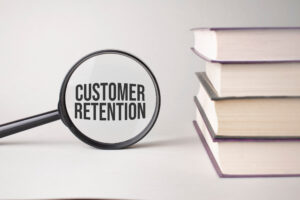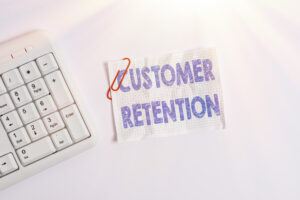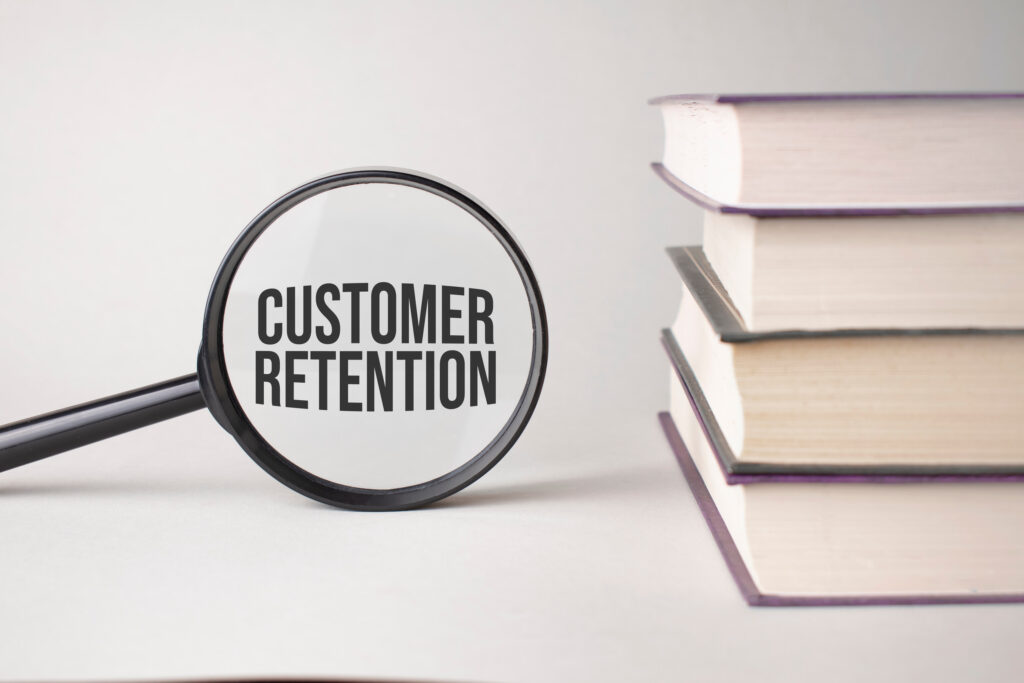
Selling to a new customer is like planting a seed and waiting for it to grow–slow, uncertain, and resource-intensive. But selling to an existing customer? That’s like nurturing a healthy tree that’s already bearing fruit.
Acquiring new B2B customers is not only harder but also more expensive. A study shows businesses have a 60 to 70 percent chance of selling to an existing customer, compared to just 5 to 20 percent for a new prospect.
Yet, many B2B companies still over-invest in acquisition while underestimating the real driver of scalable growth: customer retention.
Retention is no longer just a plan B. It’s a full-fledged growth strategy that solves businesses’ biggest challenges, including revenue instability, brand loyalty, competitive differentiation, and rising customer acquisition cost.
Best Practices for Boosting B2B Customer Retention
Before launching new campaigns, it’s important for B2B leaders to analyze their customer lifetime value (CLV) and compare it to the customer acquisition cost (CAC) ratio.
If CAC is rising faster than CLV, it’s a clear red flag. The business may be over-investing in acquisition and under-investing in retention. For example, if a company spends $100 to acquire a customer (CAC), but that customer only generates $120 in lifetime value (CLV), the margin is thin, and the strategy is unsustainable. The sweet spot is a ratio of at least 3:1. This means that for every $100 spent on acquiring a customer, the CLV should be at least $300 to ensure a healthy return on investment.
If the CLV doesn’t meet the 3:1 benchmark, it is likely a signal that the business needs to strengthen its retention efforts. Here’s how:
Strategy 1: Create a Seamless Onboarding Experience
A confusing or weak onboarding process can lead to customer frustration or worse, second thoughts about the purchase. This could lead to silent churn within the first 90 days.
The Goal
Make onboarding so easy, helpful, and aligned to customer goals that they think, “Choosing this company was a great decision.”
What to Do
- Assign a dedicated point of contact. By assigning a customer success manager, client services representative, or account manager, customers have a single, clear point of contact from day one, which builds trust and accountability.
- Develop a 30/60/90 day success plan. Map clear milestones for the first three months, aligned to the outcomes that the customer cares about most.
- Provide resources early. Send “quick start” guides, personalized training videos, and FAQs immediately after contract signing to build early momentum.
Strategy 2: Implement Proactive Customer Success Programs
Most B2B companies are reactive. They scramble to fix issues after a customer complains. By then, it’s often too late. Proactive customer success flips this dynamic.
The Goal
Engage with customers early and often, monitor health signals, and solve small problems before they become churn risks.
What to Do
- Track customer health scores. Monitor metrics like product usage, support tickets, NPS scores, and engagement frequency. Consider using tools like Zendesk Support Suite and Salesforce Service Cloud.
- Schedule regular check-ins. Host quarterly business reviews that focus on customer goals, challenges, and growth, not just metrics.
- Use automated alerts. Set up triggers that notify customer service teams when a customer’s usage dips, renewal dates approach, or satisfaction scores drop.
A customer health dashboard can provide teams with a snapshot of key success metrics, sentiment, and customer behavior. Companies that don’t already have a customer health dashboard can consider building one directly within their existing CRM or customer success platform. Even a basic dashboard can offer powerful insights when tracking just a few key metrics.
A good starting point includes three to five indicators such as:
- Logins per week (to measure engagement)
- Open support tickets (to track friction points)
- Product adoption rates (to assess feature usage)
- NPS or customer satisfaction scores (to gauge sentiment)
Strategy 3: Personalize Communication and Value Delivery
Just like B2C, B2B buyers expect a personalized experience, not just during the sales process, but throughout their journey with their providers. If communications feel generic or robotic, businesses risk losing customer loyalty.
The Goal
Develop a deep understanding of client needs, pain points, and desires. Then, leverage those insights to provide tailored experiences across multiple channels.
What to Do
- Segment customers. Group customers by industry, company size, role, revenue tier, or product adoption stage to tailor content and offers effectively.
- Celebrate milestones. Acknowledge contract anniversaries, major achievements, and renewals with personal messages or small gifts to express gratitude and strengthen relationships.
- Offer targeted resources. Send case studies, best practices, and tools that are relevant to specific challenges. This approach ensures customers receive valuable and pertinent information. Plan one to two custom touchpoints per segment per quarter to maintain engagement and nurture relationships.
Strategy 4: Build Loyalty through Exclusive Communities
Customers are “becoming increasingly wary of standard marketing tactics,” says lifecycle marketing advisor Dana Salman. “This includes advertisements that feel too pushy, webinars that come off as concealed sales pitches, or even LinkedIn requests that are just sales representatives in disguise.”
The Goal
Create deeper, more authentic engagement, beyond surface-level outreach or traditional funnels. One powerful way B2B companies are addressing this trust gap is by creating value-driven communities where customers feel heard, supported, and invested.
What to Do
- Launch a private forum or group. Give your best customers a space to learn, connect, and share.
- Offer VIP experiences. Beta test new features with community members or invite them to exclusive webinars with thought leaders.
- Encourage peer-to-peer learning. Create a space for customers to share how they use the product or service to solve real-world challenges.
Pro Tip: Businesses may start simple by creating a private LinkedIn Group for top-tier customers with a clear value proposition.
Strategy 5: Turn Feedback into Growth Gold
Most B2B leaders say they listen to customers. Meanwhile, not everyone has a structured system in place to analyze and act on feedback to drive better retention.
The Goal
Collect and analyze customer feedback. Then, make changes based on these insights.
What to Do
- Conduct regular surveys. Run quarterly NPS surveys and post-purchase satisfaction surveys.
- Hold post-churn interviews. Interview lost customers to understand what went wrong and how to fix it.
- Organize voice of customer (VoC) meetings. Conduct regular meetings with customer success teams to review feedback patterns and act accordingly.
Make Retention Your Competitive Edge

Customer retention is the backbone of predictable, profitable growth in B2B. Companies that master these strategies aren’t just reducing churn. They’re building high-value relationships, maximizing every dollar spent on acquisition, and creating a sustainable edge that’s hard to replicate. The question isn’t if retention should be a top priority. It’s how fast leaders can act on it.

